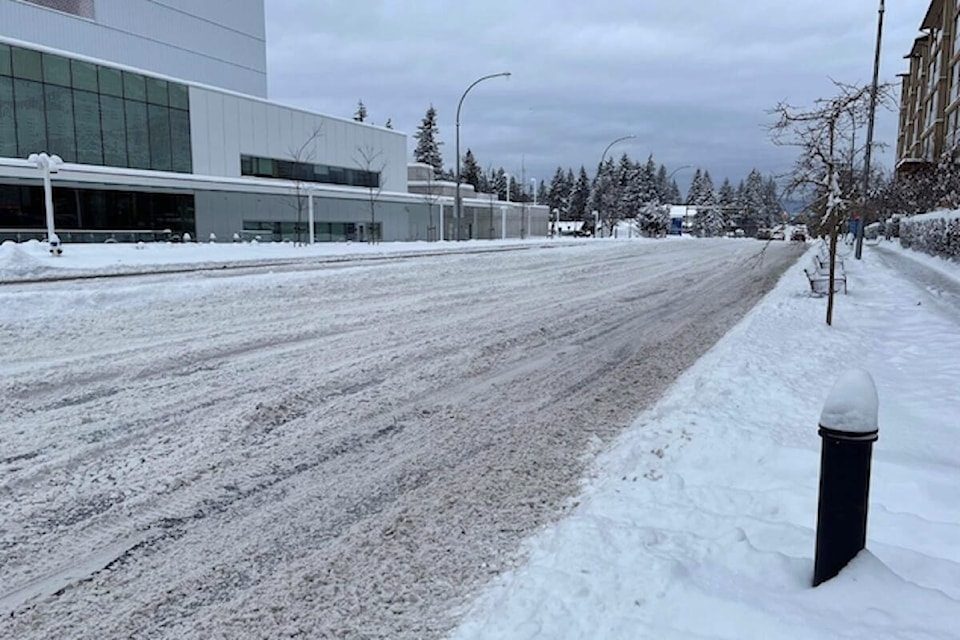When roads need clearing from ice and snow in Abbotsford, how does the city determine which ones are a priority?
According to the city website, of Abbotsford’s 910 kilometres of paved roads, 350 are considered “first-priority roadways” – those which have high traffic volumes and are arterial and collector routes.
They include transit routes, school zones and major access to hillside areas.
Second-priority roadways encompass 170 kilometres of the remaining arterial, hillside and collector routes.
Third-priority roads are the remaining 390 kilometres, which include residential streets.
“First-priority roads are maintained until conditions are under control and safe, subject to worker and equipment availability and weather,” the website states.
“Once these roads are cleared, resources are redirected to second-priority routes and then to third-priority routes.”
If snowfall occurs again before crews have been able to clear third-priority routes, they will go back to clearing the first- and second-priority roadways.
RELATED: Abbotsford Police advise caution on roads after 20 cm of snow hits area
The city says it stocks sand and salt at four storage sheds throughout the city, and the anti-ice solution (sodium chloride) production and storage tanks are inspected and prepared for potential winter conditions.
Roads are addressed in three phases, according to the city.
The first phase is using the anti-icing solution before snow has fallen or frost/ice has formed.
The second phase uses a sand-and-salt mixture, pre-wetted with a sodium chloride solution, during and after a snowfall.
The third phase is snow plowing, when enough snow has accumulated on roads. Tandem trucks outfitted with belly plows and/or front plows apply a sand-and-salt mixture while plowing.
RELATED: PHOTOS: See how Abbotsford coped with waking up to a fresh heap of snow
The city website reminds residents that, under the Good Neighbour Bylaw, they are responsible for clearing the sidewalks in front of their properties within 24 hours after snow has stopped falling or ice had formed.
The website (abbotsford.ca/weather/snow-ice) provides a map indicating what roads are designated as first, second and third priority.
Highway 1, Highway 11 and Mt. Lehman Road (south of Highway 1 to the airport) are the responsibility of the Ministry of Transportation and Infrastructure.
The city clears the roundabouts and arterial streets but not the on- or off-ramps to the highway.
vhopes@abbynews.com
Like us on Facebook and follow us on Twitter
